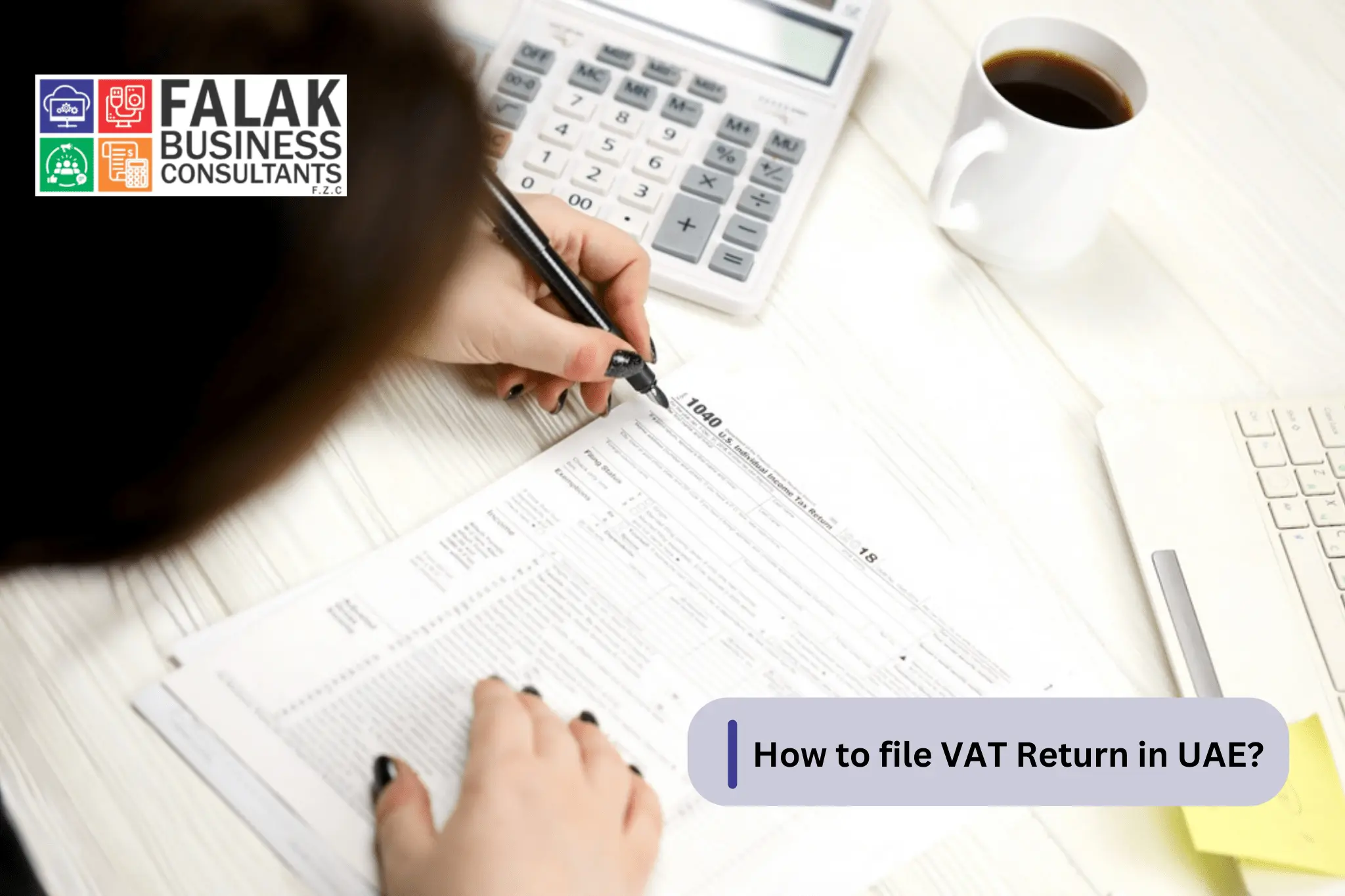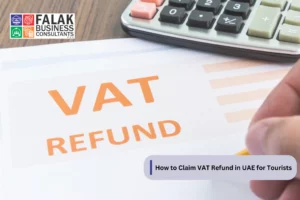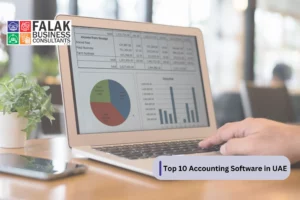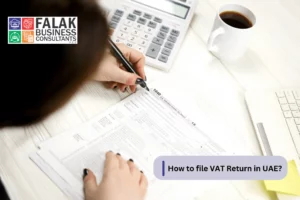File your VAT return electronically in the UAE through the FTA portal. Before submitting, ensure you’ve met all tax return requirements. VAT-registered businesses (taxable persons) must submit a VAT return to the Federal Tax Authority (FTA) at the end of each tax period.Unlike offline alternatives, the FTA portal exclusively accepts online submissions, necessitating manual input of crucial details such as Sales, Purchases, Output VAT, Input, and Input VAT into the designated sections of the VAT return form, named ‘VAT 201.’
In this comprehensive guide, we will unravel the intricacies of each section, offering insights garnered from various competitors to help you seamlessly fulfill your VAT return obligations. Let’s delve into the details of each section to demystify the VAT filing in Dubai and UAE.
Understanding VAT Return in UAE
Overview of VAT:
Value Added Tax (VAT) is a consumption tax levied on goods and services at each stage of the supply chain. In the UAE, VAT was introduced to diversify revenue sources and enhance public services, and the standard VAT rate in the UAE is 5%. VAT is applied to a wide range of goods and services, impacting businesses and consumers alike.
Who Needs to File VAT Return in UAE:
VAT filing is mandatory for businesses that meet certain criteria. Typically, businesses with an annual turnover exceeding a specified threshold must register for VAT and subsequently file regular returns. It’s essential to clarify these criteria to ensure compliance. Additionally, there may be exemptions or thresholds for certain types of businesses, and understanding these nuances is crucial to navigating the VAT landscape effectively.
VAT Registration Process:
Registering for VAT in the UAE involves a systematic process to ensure that businesses meet their tax obligations. Typically, businesses meeting the turnover threshold must initiate the registration process through the official government portal. This process includes providing essential details about the business, such as its legal structure, contact information, and financial records. To facilitate the registration process, businesses can visit the official government website dedicated to VAT registration, where step-by-step guidance is available.
Documents Required for VAT Registration:
To complete the VAT registration process, businesses need to compile and submit specific documents. These documents may include but are not limited to:
- Valid Trade License Copy:
- Unexpired Passport Copies
- Unexpired Emirates ID Copies:
- Memorandum of Association (MOA) or Article of Association (AOA):
- Contact Details of Concerned Person: =
- Comprehensive Company Contact Information:
- Corporate Tax Period Information:
Ensuring that all required documents are in order is vital for a smooth registration process. Businesses should refer to the official guidelines provided by the government to confirm the specific documents needed for VAT registration.
Steps on How to file VAT Return in UAE
Efficiently navigating the VAT return filing process in the UAE hinges on a structured approach, primarily centered around the completion of the crucial ‘VAT 201’ form. This form serves as the linchpin, encapsulating essential details necessary for businesses to fulfill their obligations to the Federal Tax Authority (FTA).
Accessing VAT Return Form 201:
To initiate the VAT return filing process, the taxpayer must log in to the FTA’s e-Services portal using their registered credentials. From the form Navigation menu, selecting ‘VAT’ -> ‘VAT 201- VAT Return’ -> clicking on ‘VAT 201-New VAT Return’ sets the process in motion.
Details of Taxable Person:
In this section, the ‘TRN’ (Tax Registration Number), taxpayer’s name, and address are automatically populated. For cases where a tax agent is submitting the VAT return on behalf of the taxpayer, details of the TAAN (Tax Agent Approval Number), TAN (Tax Agency Number), along with the Tax Agent and Tax Agency name are prominently featured at the top of the VAT Return.
VAT Return Period:
This section seamlessly auto-populates essential details such as the VAT return period, Tax Year end, VAT return period reference number, and VAT return due date. The Tax Year end becomes critical for businesses unable to recover all input VAT, triggering an annual adjustment, allowable only in the first return following the tax year end.
VAT on Sales and All Other Outputs:
Furnishing this section demands a meticulous breakdown of details, including standard rate taxable supplies at the Emirates level, zero-rate supplies, exempt supplies, and those subject to the reverse charge mechanism. Businesses need to provide a comprehensive overview of their sales and outputs during the specified period.
VAT on Expenses and All Other Inputs:
Detailed reporting of purchases, expenses subject to a standard 5% VAT rate, and supplies subject to reverse charge forms the crux of this section. Additionally, businesses must present eligible recoverable input tax to ensure a comprehensive overview of their financial activities.
Net VAT Due:
This pivotal section calculates the VAT payable for the return period. Box number 12 indicates the total value of due tax, derived from the information declared in Sales and all other outputs. Conversely, box number 13 reflects the total value of recoverable tax, calculated based on the details furnished in VAT expenses and all other inputs. Box number 14 signifies the payable tax for the period, determining the net VAT payable or recoverable tax.
Additional Reporting Requirement:
Applicable only for businesses utilizing the Profit Margin Scheme, this section represents an additional reporting step without significant financial impact on the VAT return.
Declaration and Authorized Signatory:
In this concluding section, businesses must provide details of the authorized signatory and tick the declaration section box to submit the VAT return. The option to save details as a draft is available, ensuring businesses can review and verify information before final submission. Post successful filing, a confirmation email from the FTA attests to the completion of the VAT return submission.
Common Challenges and Solutions to VAT Return Filing in UAE
Errors to Avoid:
Filing VAT returns in the UAE comes with its share of challenges, often stemming from common errors made by businesses. It is crucial to identify and steer clear of these pitfalls to ensure a seamless and accurate VAT return filing process. Some common errors include:
Incomplete Documentation: Neglecting to maintain comprehensive records of transactions, invoices, and expenses can lead to inaccuracies in the VAT return. To avoid this, businesses should implement robust record-keeping practices.
Misclassification of Transactions: Incorrectly categorizing transactions as taxable, exempt, or zero-rated can result in misreporting. Businesses should invest time in understanding the intricacies of VAT classifications and seek professional advice if unsure.
Deadline Oversights: Missing filing deadlines attracts penalties. Establishing a reliable internal calendar and setting reminders can help businesses stay on top of deadlines and submit returns punctually.
Input and Output Tax Discrepancies: Failing to reconcile input and output tax accurately may lead to miscalculations. Regularly reviewing and reconciling these figures can help identify and rectify discrepancies promptly.
Lack of Professional Guidance: Relying solely on internal resources without seeking professional advice can amplify the risk of errors. Engaging professional VAT consultants in Dubai can provide valuable insights and ensure compliance with evolving VAT regulations.
Solutions to Common Issues:
Encountering challenges during the VAT return filing process is not uncommon. However, businesses can navigate these hurdles effectively with the following solutions:
Regular Training and Education: Conduct periodic training sessions for staff involved in the VAT filing process to keep them abreast of regulatory changes and best practices.
Implementation of Automated Systems: Investing in automated accounting systems can significantly reduce errors associated with manual data entry and calculations.
Engagement of Tax Professionals: For complex transactions or uncertainties, seeking advice from tax professionals ensures accurate interpretation of VAT regulations and minimizes the risk of errors.
Utilization of FTA Resources: Leveraging resources provided by the Federal Tax Authority, such as guides, FAQs, and helplines, can address common issues and provide clarifications.
Timely Reconciliation: Regularly reconcile financial records with VAT returns to identify discrepancies promptly. This proactive approach aids in resolving issues before they escalate.
Professional Consultation for Special Cases: In instances involving unique or complex transactions, seeking professional consultation becomes imperative. Tax experts can provide tailored solutions and guidance.
Navigating the intricacies of VAT filing in Dubai and UAE demands vigilance, ongoing education, and a proactive approach to problem-solving. Encouraging businesses to stay informed and seek professional assistance when needed fosters a culture of compliance and accuracy in VAT-related processes.
How Falak Business Consultant Help You During VAT Return Filing in UAE
Navigating the intricacies of VAT return filing in the UAE demands precision and expertise, and this is where Falak Business Consultants stand as your trusted ally. With a commitment to ensuring seamless compliance, Falak Business Consultants offer tailored solutions to simplify the complexities of VAT return filing. Our experienced team understands the nuances of the ever-evolving tax landscape, providing comprehensive support to businesses at every step of the process. From meticulous documentation to proactive error identification and resolution, our consultants work tirelessly to streamline your VAT obligations. As one of the top accounting firms in Dubai, Falak FZC offers VAT return filing services that are compatible with FTA regulations.










